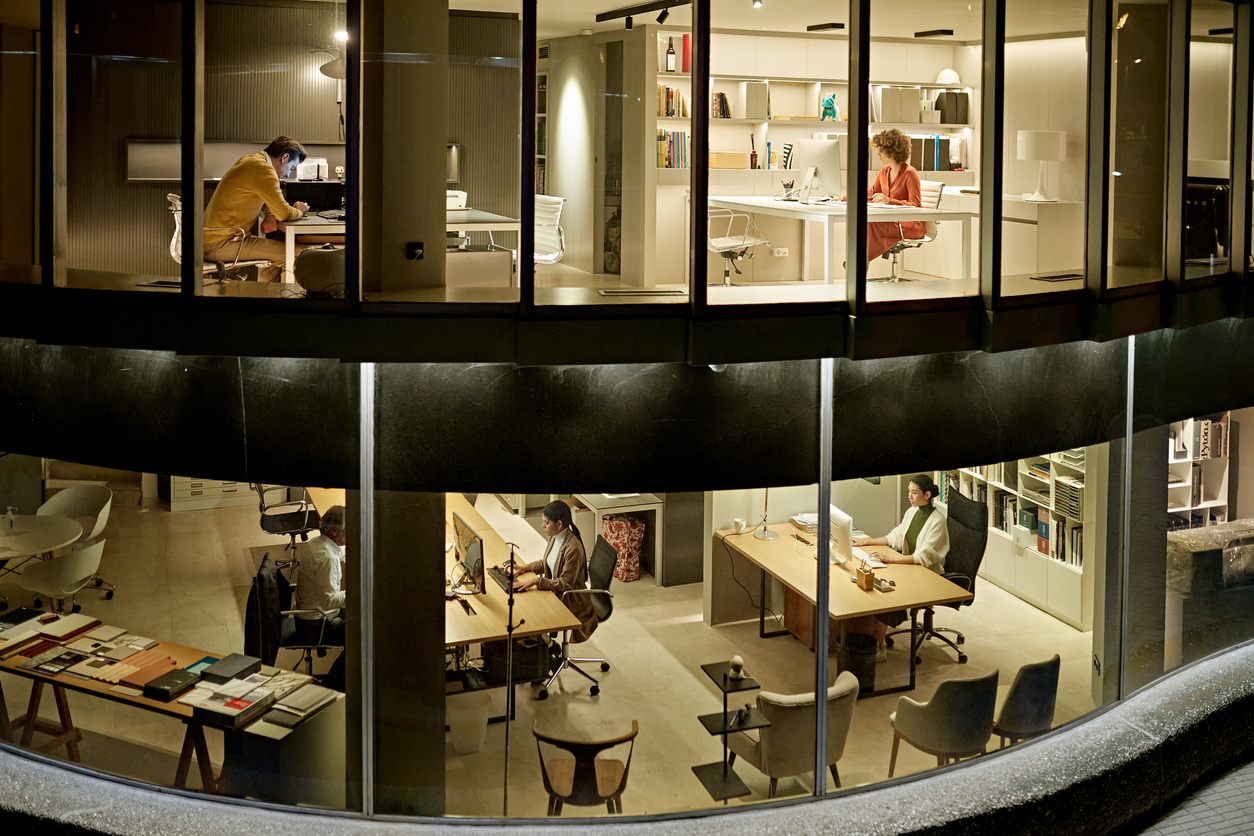The property is now being redeveloped as upscale apartment buildings. Private cabanas for small gatherings, grilling stations, a bocce lawn, and contemporary sculpture surround the 435 residential units.
"This is a steampunk cherry tree," Liz Godesky, senior vice president of the project's developer, Lowe Enterprises Inc., said, pointing to a piece of art commissioned by her company for the properties.
According to Yardi Matrix, a real-estate data firm, the Park and Ford apartments are one of 151 office buildings, hotels, or other commercial properties that have been converted to apartments in the United States this year.
With multifamily housing in short supply and rents at all-time highs, the Alexandria development raises the possibility that the country's surplus of vacant office buildings could be converted into apartments.
Until recently, developers focused on converting early to mid-century office towers in downtown districts, which have relatively compact dimensions that make them ideal for apartments. However, many empty office buildings resemble the Park and Ford. They are newer, larger, and frequently located off the interstate.
According to CoStar Group data, there are nearly 1,000 relatively new office buildings nationwide that developers may consider as candidates for residential conversion: properties built since 1980, measuring more than 100,000 square feet, and at least 50% vacant.
Lowe and its partner USAA Real Estate purchased the two 1980s office towers in 2017, at a time when the office market was already deteriorating.
Several factors favored the developers. The floors in the towers were about 80 feet deep, which made them shallower than other office buildings of the same era and better suited to residential conversion. Larger floors either create too much space in the center of the building or isolate interior rooms from natural light.
Rent payments from the remaining office tenants meant that the owners had money to spend on relocating them. Another large office building next door had already been converted into apartments, proving the concept.
The builders then set about making these drab office buildings, surrounded by a vast concrete plaza, into a place where people would want to live. They enhanced the facade with operable windows and blue and orange accents, as well as a sleek glass and steel lobby. They anchored new balconies directly into existing flooring to make it appear as if they had always been there, rather than using the simpler, less expensive method of hanging them from suspension rods.
"All of those things add texture to the building and definitely make it read residential," said Lowe executive vice president Mark Rivers.
Nonetheless, developers of conversion projects face challenges that are not present in new construction. Damaged concrete, mold, and asbestos at the Park and Ford delayed construction and cost millions of dollars to repair.
According to Valerie Campbell, a land use attorney at the Kramer Levin firm in New York who has worked on conversions for more than three decades, zoning regulations, unconventional layouts, and unpredictable construction budgets can all make many buildings unsuitable for reuse.
"At some point, if the cost of modifying a building approaches the cost of new construction, it really may not make sense," she said.
Moreover, despite the scarcity of affordable housing, most office conversions are built as market-rate apartments for professional-class millennials in order for developers to make a profit.
"The cost of rehabilitation may force us to offer only market rate," said David Downey, president of the International Downtown Association. His company is advocating for federal subsidies for conversions that include affordable housing.
The Park and Ford apartments, which have 10 affordable units, or about 2% of the total, had to fit into a building that was not designed for residential use. For example, the distance between the apartment door and its exterior window in some units means that the dens or bedrooms may face an interior living area rather than the outdoors.
The developers stocked the bottom floor with amenities, claiming the properties were built on land once owned by founding father George Washington. A pet spa, gym and yoga room, a package room with refrigerated storage, a multisport simulator for games like baseball and golf, a private dining room, and co-working office space were all added.
The Park and Ford began leasing in the fall, and the developers anticipate that it will be fully occupied by the summer. They couldn't have arrived at a better time. Over the last year, asking rents in the area have risen by double digits. The property's smallest one-bedroom unit rents for more than $1,700 per month, and large two-bedroom units can cost up to $3,200. The developers are giving away one month for free.
Clara Chapoton, a 27-year-old accounting student, was living in the converted office building next door when she received notice of a large rent increase. She discovered a lower rate at Park and Ford.
"I think the amenities here are insane," Ms. Chapoton said. She and her Pomeranian-shih tzu mix, Rocket, intend to use the private dog park being built across the street on a regular basis.













